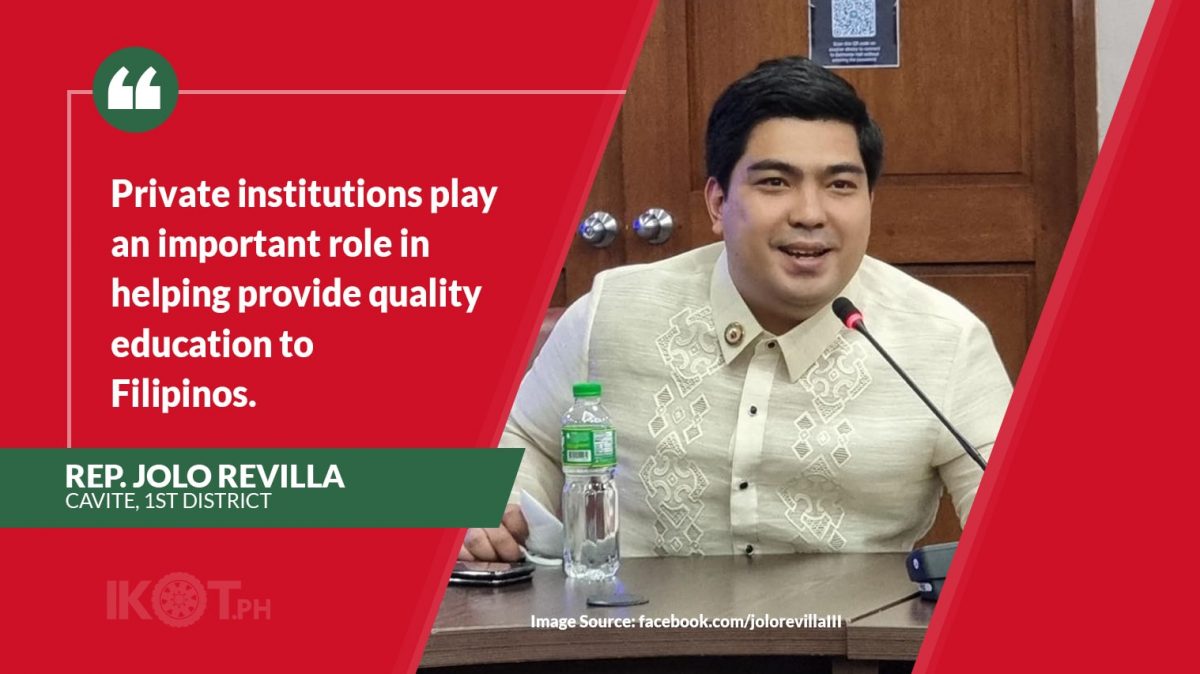A proposal to establish a voucher system for poor and academically qualified students in private higher educational institutions (HEIs) and private technical vocational institutions (TVIs) has hurdled committee level at the House of Representatives.
The House Committee on Higher and Technical Education, chaired by Baguio City Representative Mark Go, approved a substitute bill to five measures seeking to amend Republic Act 10931 or the “Universal Access to Quality Tertiary Education Act.”
Cavite Representative Jolo Revilla, in his sponsorship speech delivered on behalf of Cavite Representative Lani Mercado-Revilla, said private institutions play an important role in helping provide quality education to Filipinos.
“This would offer an opportunity for the underprivileged to choose whichever school is aligned with their needs and career direction.”
Revilla said this would offer an opportunity for the underprivileged to choose whichever school is aligned with their needs and career direction.
Commission on Higher Education (CHED) Chairperson Prospero de Vera III lauded the bill but raised that this would have fiscal implications on the government when enacted into law.
Go, however, explained that the CHED and the Unified Student Financial Assistance System for Tertiary Education (UniFAST) could utilize existing funds, as the measure seeks to allow existing tertiary education subsidy beneficiaries to enter private schools instead of the current law that limits their options to public schools.
De Vera emphasized the need to augment funding for new beneficiaries, which Go noted could be proposed in the national budget.
“This would also help promote quality education in the country by strengthening competition among public and private HEIs and TVIs.”
Marikina City Representative Stella Luz Quimbo said this would also help promote quality education in the country by strengthening competition among public and private HEIs and TVIs.
The House panel also approved a bill granting free college entrance examinations to graduating high school students, high school graduates, college entrants or transferees applying for admission in state universities and colleges and local colleges and universities, as well as to the underprivileged public high school students belonging to the top 10 percent of the graduating class applying for admission in private higher education institutions.


